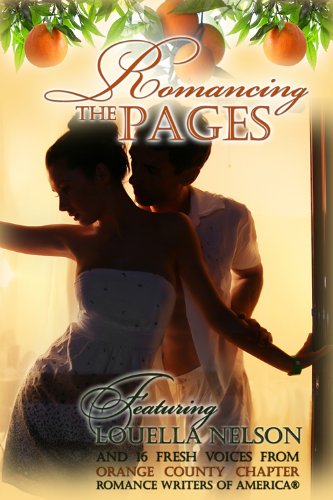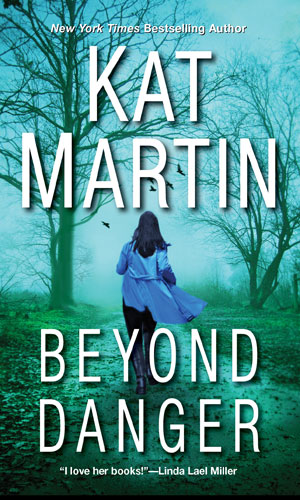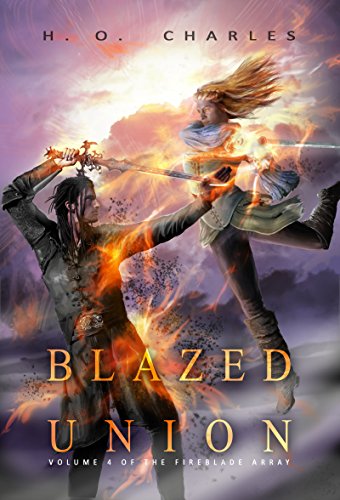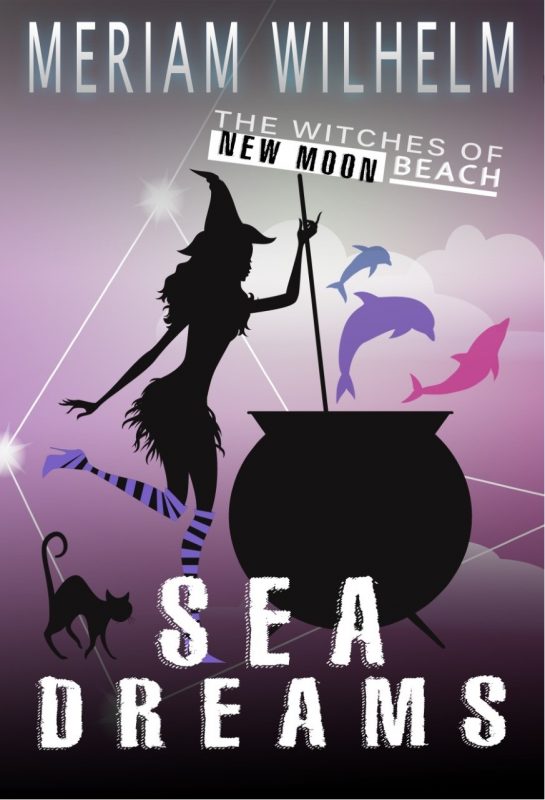Finding My Voice by Veronica Jorge
November 22, 2025 by Veronica Jorge in category Write From the Heart by Veronica Jorge tagged as muse, voice
I didn’t lose my voice. I just can’t find the heart of my story or the right words to express it.
Like teenagers talking all at once, ideas wave before my eyes vying for attention and making me dizzy. I blink them away because I sense they are distracting me from finding the jewel I seek. I silence them using the voice of my 8th grade teacher. “Empty barrels make the most noise.” They flutter away. It’s silent now.
Silence. What is it they say about silence? Silence is golden. Aha, the treasure I seek. Which reminds me of a line from the 1956 musical film by Rodgers and Hammerstein, The King and I. In a pregnant romantic moment between King Mongkut played by Yul Brynner and Mrs. Anna portrayed by Deborah Kerr, the king says, “When one does not know what to say, it is a time to be silent.”
Sage advice. So I quiet all of my thoughts and emotions. In that silence, I hear a sound of rushing waters. Then music trickles out like a spring, new and refreshing. It is my voice.
My fingers tinkle the keys of my laptop. Like musical notes, I string the letters together to form the right words.

A vision of Disney’s The Little Mermaid appears before me. Ariel has lost her voice and found her prince. I smile for it was in her silence that she touched and won his heart.
See you next time on December 22nd.
Veronica Jorge
Getting in Touch with the Right Side of my Brain by Peter J Barbour
July 13, 2022 by Bethlehem Writers Group in category From a Cabin in the Woods by Members of Bethlehem Writers Group tagged as creativity, innovation, muse, neurologist, Peter Barbour
Betty Edwards’ book, “Drawing on the Right Side of the Brain (1),” opened my eyes to a reality I hadn’t fully appreciated. As a neurologist, I understand the functions assigned to various locations within the brain. However, I never completely respected the dominant hemisphere’s power. Most people are right-handed indicating the left half of the brain is their dominant hemisphere, the center for logic and language. If I let it, my dominant hemisphere rules, governing by talking constantly and ruminating, at times, keeping me up at night reviewing, reminding, advising, revising, and creating anxiety. It can be unrelenting and exhausting.
Pop culture has long espoused that the right, non-dominant, hemisphere, in right-handed people, is the center of creativity. However, functional anatomic studies have not proven that hypothesis; and, in general, the concept of strict lateralization of creativity to the right side of the brain is no longer accepted. Nevertheless, that historic, theoretic construct remains useful for this discussion. (2)
What happened to the right half of the brain or wherever innovation resides? According to Betty Edwards, the education system took care of that by heavily favoring a curriculum of dominant hemisphere activities with emphasis on communicating through reading, writing, speaking, and exercising logic. The dominant side of the brain perceives the parts of things and processes in a linear sequential fashion. On the other hand, the innovative centers tend to be more spontaneous and conscious of the whole.
Right brain development became stunted halfway through elementary school. Betty Edwards points out, if one tries to sketch a picture of something, for many of us whose left-brain dominates, the depiction looks primitive, like something created in fourth grade. Try to draw anything and the left brain won’t allow it. Instead, it names the thing, consciously or unconsciously, and the right hand obeys producing a stereotypical likeness of the object rather than the article observed. The dominant hemisphere takes over limiting creativity.
How can I shut down my left hemisphere, let the right-side shine, and escape the constant banter interfering with sleep and relaxation, and stifling inventiveness? What happens when I finally break away, escaping the left hemisphere’s tyranny. I find quiet and peace. Time flies.
Meditation is one way to achieve this. I turn off the voice, listen to my surroundings, concentrate on breathing. Who knows, if I focus on nothingness long enough, someone wiser than I once suggested, I may hear the angels whispering. Our North American culture doesn’t generally allow for guiltless free unproductive time, making meditation difficult.
I’ve discovered other activities with the hope of reaching the same end. My answer to that conundrum involves incorporating a constructive activity with the mediative practice. I stand in a stream with water rushing past me. An egret walks slowly on the opposite shore staring in my direction. I cast and retrieve a feather tied to a hook at the end of a long line, concentrate on the process, commune with nature. I may even catch a fish. I play a musical instrument, doesn’t matter how well. Music is about spatial relationships, a non-dominant hemisphere specialty. I paint a picture and become a part of the scene, lost in the color, and the lines. I walk among the flowers on the canvas, smell their fragrance, feel the breeze ruffling the leaves. Free the right hemisphere. Time flies.
That brings me to writing/composing. Harness the left brain. Creating fiction is like painting. My pallet is filled with words. I paint with them, craft images, dissolve into the story, live the mystery, fly among the stars to strange worlds, survive a dystopia, fall in love, reminisce, dream, get lost, find my way, escape into a world I create.
1. Drawing on the Right Side of the Brain, Betty Edwards, 1979, Simon and Shuster.
2. Robert Schmerling, Harvard Health Publishing

Peter Barbour has been writing for over thirty years. He published “Loose Ends,” a memoir, in 1987, followed by a series of short stories from 1992 to 1995. “The Fate of Dicky Paponovitch” won Raconteur of the Month, May 1994, Raconteur Magazine, Susan Carrol Publishing. Since 2015, he has published more than twenty-five short stories which have appeared in shortbreadstories.co.uk, storystar.com, and shortstory.me, The Piker Press, Rue Scribe, Star Light Path, and ArtPost Magazine. His short story, “Why Bats Live in Caves,” can be found in “Fur, Feathers, and Scales: Sweet, Funny, and Strange Animal Tales,” an anthology from the Bethlehem Writers Group. Barbour wrote and illustrated three children’s books, “Gus at Work,” “Oscar and Gus,” and “Tanya and the Baby Elephant.” He is a member of the Bethlehem Writers Group. Links to his stories and illustrations can be found at www.PeteBarbour.com Barbour enjoys deconstructing stories to see how they are put together. He grew up loving the Wizard of Oz series, and dutifully read each book in the series to his children. The hero goes on a journey is one of his favorite themes.
He loves the outdoors, and especially the Pacific Northwest, which serves as the setting for many of his stories. He is married, and likes to travel, which affords him the opportunity to absorb new experiences from which to write. Barbour attended the University of Pennsylvania as an undergraduate and Temple University School of Medicine where he earned his M.D. He completed his residency training in Neurology, at Stanford University School of Medicine and practiced medicine in the Lehigh Valley until 2015 when he retired.
He believes that what comes from the heart goes to the heart.
Pete’s Books
Nothing Found
Books from Bethlehem Writers Group, LLC
1 1 Read more
Finding My Voice by Veronica Jorge
December 22, 2019 by Veronica Jorge in category Write From the Heart by Veronica Jorge tagged as muse, voice
I didn’t lose my voice. I just can’t find the heart of my story or the right words to express it.
Like teenagers talking all at once, ideas wave before my eyes vying for attention and making me dizzy. I blink them away because I sense they are distracting me from finding the jewel I seek. I silence them using the voice of my 8th grade teacher. “Empty barrels make the most noise.” They flutter away. It’s silent now.
Silence. What is it they say about silence? Silence is golden. Aha, the treasure I seek. Which reminds me of a line from the 1956 musical film by Rodgers and Hammerstein, The King and I. In a pregnant romantic moment between King Mongkut played by Yul Brynner and Mrs. Anna portrayed by Deborah Kerr, the king says, “When one does not know what to say, it is a time to be silent.”
Sage advice. So I quiet all of my thoughts and emotions. In that silence, I hear a sound of rushing waters. Then music trickles out like a spring, new and refreshing. It is my voice.
My fingers tinkle the keys of my laptop. Like musical notes, I string the letters together to form the right words.
A vision of Disney’s The Little Mermaid appears before me. Ariel has lost her voice and found her prince. I smile for it was in her silence that she touched and won his heart.
See you next time on January 22nd. Happy New Year!
Veronica Jorge
Nominate the Independent
November 13, 2019 by A Slice of Orange in category From a Cabin in the Woods by Members of Bethlehem Writers Group tagged as BWG, Diane Sismour, muse, story ideas, writing

Muses are complicated, unreliable, reluctant and downright ornery at time. Especially those times fiction writers rely on their whispers. No matter how much pleading we may do, they can flutter a story to someone new—someone who paid their heed to write with haste to complete the plot and not let life get in the way.
Muses are overrated, say the writers who aren’t staring at a white page with a dash blinking.
We should make a stand against how creativity blips into our minds and conjures ideas. The very lifeblood of our writing careers dance on the wire between characters flowing into reality, and the hard-pressed compromise of grunting words onto the page.
Would we ever turn our backs on the whispers? No. The whispers manage to coerce us into believing we can’t manage without them. That any organic thought would perish before the second scene.
However, muses don’t stand well against the match of a good writing partner. A partner who can in your most dire of need, visualize a story from beginning to end and hit all the plot twists. Someone who doesn’t wisp away when the writing gets tough, and who can switch their imagination on at your darkest hour to find the turning point in your story. Just remember to take notes!
So wherever you are in your writing careers, stand tall against relying on the whispers. Talk to a confidant and work through the saggy middles of your plots. Find the character flaws that can make your story live. Unite against the muse and nominate the independent. You.
Happy writing!
Diane Sismour
P.S. Please don’t tell my muse!
Books by Diane Sismour
Searching For My Writing Juju
November 20, 2018 by Meriam Wilhelm in category A Bit of Magic by Meriam Wilhelm tagged as goals, muse, writing

It was Sunday night before I knew it and I still hadn’t finished rewriting the next chapter of my book, nor my blog for a Slice of Orange. I was stuck, the clock was ticking and I had no one to blame but myself. I’d made too many alternate life choices this month when I should have been writing!
You might have seen my blog last month (Please Don’t Make Me Have To Learn How To Ride A Camel) where I shared with you that I’m turning sixty-five in a few months and I’ve set all these goals for myself. My conscience is killing me as I check back in with you.
Over the past month, not only have I not spent enough time writing, I’ve sadly made no noticeable downward movement on the bathroom scale. I have been walking as you can see from the attached picture. And walking on the beach requires a lot more hard work, although my FitBit refuses to take that into consideration. Traitor!
Tonight I discovered that one of the goals I’d made turned out to be a bit wonky. And although I could use it as a time consuming excuse for not writing… I won’t. I have to admit that I got swept up by the title of a book and made a big assumption. I thought that it sounded like a motivational piece that might help me to focus on personal self-improvement strategies. I said I was going to read Paul Arden’s best seller – It’s Not How Good You Are, It’s How Good You Want To Be. And I did and I liked it. Only it wasn’t what I thought it would be. It was designed for readers who want to improve their status in the workplace. I’m retired.
But wait, having read it once – it’s short – I returned and read it a second time searching for nuggets of guidance that might prove helpful… and I found some.
Keying on Arden’s last truth – “Ambition trumps talent”, I humbly got back to work, ambitiously typing away on the keyboard to write this blog. I even finished editing the next chapter of my book tonight, pleased that I’d re-found a bit of my writing JuJu in a most unexpected place.
Affiliate Links
A Slice of Orange is an affiliate with some of the booksellers listed on this website, including Barnes & Nobel, Books A Million, iBooks, Kobo, and Smashwords. This means A Slice of Orange may earn a small advertising fee from sales made through the links used on this website. There are reminders of these affiliate links on the pages for individual books.
Search A Slice of Orange
Find a Column
Archives
Featured Books
ROMANCING THE PAGES
Celebrate all year long through Romancing the Pages
More info →BEYOND DANGER
New York Times bestselling author Kat Martin brings page-turning suspense to a tale of secrets and passions turned deadly . . .
More info →SNOWLANDS
Will she be able to accept the person her memories describe?
More info →BLAZED UNION
Fate has other plans for those with fire and fury in their hearts.
More info →SEA DREAMS
Can help from a lavender-eyed sea witch, a few enchanted cupcakes and a touch of New Moon magic really rescue a once famous now washed up artist from himself?
More info →Newsletter
Contributing Authors
Search A Slice of Orange
Find a Column
Archives
Authors in the Bookstore
- A. E. Decker
- A. J. Scudiere
- A.J. Sidransky
- A.M. Roark
- Abby Collette
- Alanna Lucus
- Albert Marrin
- Alice Duncan
- Alina K. Field
- Alison Green Myers
- Andi Lawrencovna
- Andrew C Raiford
- Angela Pryce
- Aviva Vaughn
- Barbara Ankrum
- Bethlehem Writers Group, LLC
- Carol L. Wright
- Celeste Barclay
- Christina Alexandra
- Christopher D. Ochs
- Claire Davon
- Claire Naden
- Courtnee Turner Hoyle
- Courtney Annicchiarico
- D. Lieber
- Daniel V. Meier Jr.
- Debra Dixon
- Debra H. Goldstein
- Debra Holland
- Dee Ann Palmer
- Denise M. Colby
- Diane Benefiel
- Diane Sismour
- Dianna Sinovic
- DT Krippene
- E.B. Dawson
- Emilie Dallaire
- Emily Brightwell
- Emily PW Murphy
- Fae Rowen
- Faith L. Justice
- Frances Amati
- Geralyn Corcillo
- Glynnis Campbell
- Greg Jolley
- H. O. Charles
- Jaclyn Roché
- Jacqueline Diamond
- Janet Lynn and Will Zeilinger
- Jaya Mehta
- Jeannine Atkins
- Jeff Baird
- Jenna Barwin
- Jenne Kern
- Jennifer D. Bokal
- Jennifer Lyon
- Jerome W. McFadden
- Jill Piscitello
- Jina Bacarr
- Jo A. Hiestand
- Jodi Bogert
- Jolina Petersheim
- Jonathan Maberry
- Joy Allyson
- Judy Duarte
- Justin Murphy
- Justine Davis
- Kat Martin
- Kidd Wadsworth
- Kitty Bucholtz
- Kristy Tate
- Larry Deibert
- Larry Hamilton
- Laura Drake
- Laurie Stevens
- Leslie Knowles
- Li-Ying Lundquist
- Linda Carroll-Bradd
- Linda Lappin
- Linda McLaughlin
- Linda O. Johnston
- Lisa Preston
- Lolo Paige
- Loran Holt
- Lynette M. Burrows
- Lyssa Kay Adams
- Madeline Ash
- Margarita Engle
- Marguerite Quantaine
- Marianne H. Donley
- Mary Castillo
- Maureen Klovers
- Megan Haskell
- Melanie Waterbury
- Melisa Rivero
- Melissa Chambers
- Melodie Winawer
- Meriam Wilhelm
- Mikel J. Wilson
- Mindy Neff
- Monica McCabe
- Nancy Brashear
- Neetu Malik
- Nikki Prince
- Once Upon Anthologies
- Paula Gail Benson
- Penny Reid
- Peter J Barbour
- Priscilla Oliveras
- R. H. Kohno
- Rachel Hailey
- Ralph Hieb
- Ramcy Diek
- Ransom Stephens
- Rebecca Forster
- Renae Wrich
- Roxy Matthews
- Ryder Hunte Clancy
- Sally Paradysz
- Sheila Colón-Bagley
- Simone de Muñoz
- Sophie Barnes
- Susan Kaye Quinn
- Susan Lynn Meyer
- Susan Squires
- T. D. Fox
- Tara C. Allred
- Tara Lain
- Tari Lynn Jewett
- Terri Osburn
- Tracy Reed
- Vera Jane Cook
- Vicki Crum
- Writing Something Romantic
Affiliate Links
A Slice of Orange is an affiliate with some of the booksellers listed on this website, including Barnes & Nobel, Books A Million, iBooks, Kobo, and Smashwords. This means A Slice of Orange may earn a small advertising fee from sales made through the links used on this website. There are reminders of these affiliate links on the pages for individual books.


































































